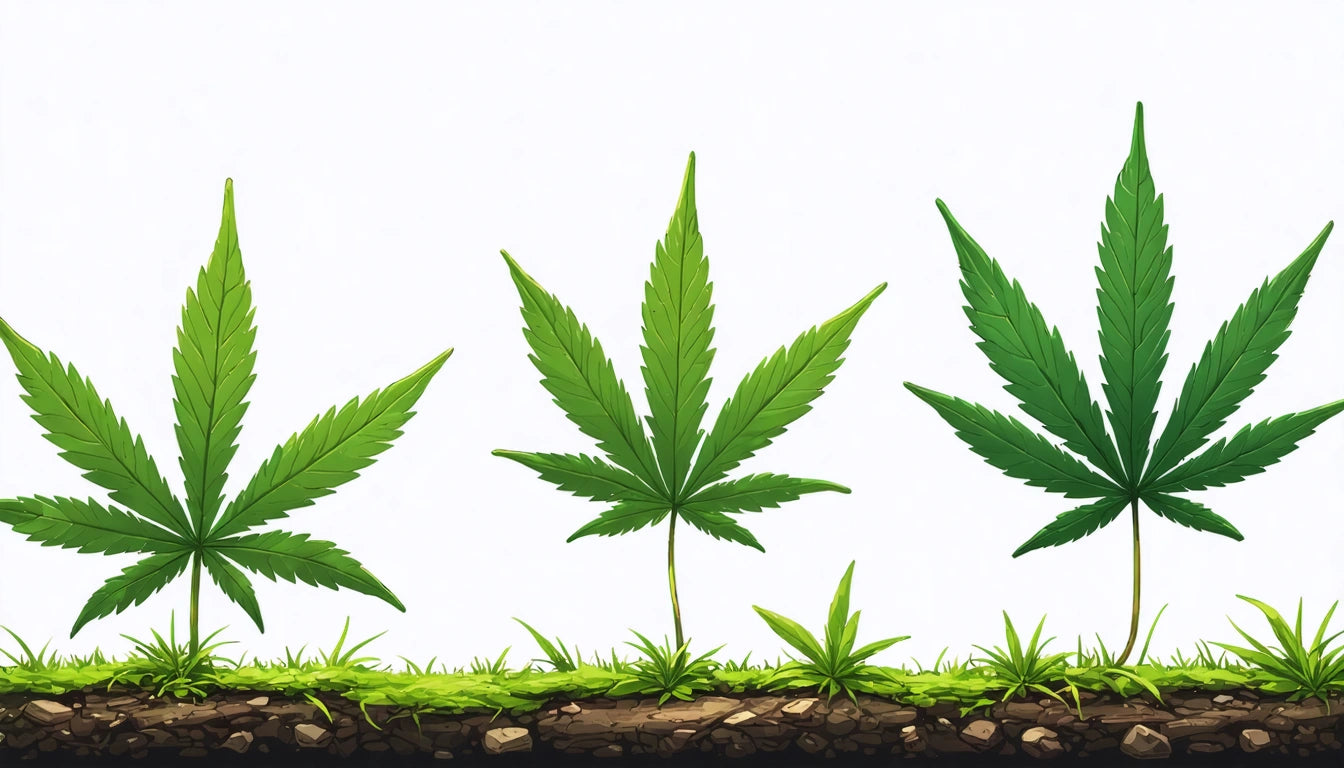Table of Contents
- Botanical Classification: Same Family, Different Varieties
- Appearance Differences: Hemp Plant vs. Marijuana Plant
- THC Content: The Critical Legal Distinction
- Cultivation Methods and Growing Conditions
- Legal Status: Hemp vs. Marijuana Regulations
- Industrial Uses of Hemp vs. Recreational/Medical Uses of Marijuana
- Future Applications and Evolving Perceptions
Understanding the Differences Between Hemp and Marijuana
Hemp and marijuana often cause confusion due to their similar appearance and shared botanical heritage. Both belong to the Cannabis sativa plant species, but they differ significantly in chemical composition, uses, and legal status. This comprehensive guide explores the key differences between hemp and marijuana to provide clarity on these commonly misunderstood plants.
Botanical Classification: Same Family, Different Varieties
Hemp and marijuana both belong to the Cannabis genus, specifically Cannabis sativa L. However, they represent different varieties bred for distinct purposes over thousands of years. This selective breeding has resulted in plants with significantly different characteristics and chemical profiles.
According to research on cannabis plant basics, the taxonomic classification remains somewhat controversial among botanists, with some arguing for separate species designations while others maintain they are varieties of the same species.
Appearance Differences: Hemp Plant vs. Marijuana Plant
Visual distinction between hemp and marijuana plants can be challenging for the untrained eye, but several key differences exist:
Hemp Plant Characteristics
- Typically taller and skinnier with fewer branches
- Longer, narrower leaves concentrated at the top
- Stalks are fibrous and tough
- Less dense foliage overall
- Often grown in tight rows like traditional crops
Marijuana Plant Characteristics
- Generally shorter and bushier with more branches
- Broader, denser leaves throughout the plant
- More visible resin glands (trichomes)
- Distinctive bud formations
- Typically grown with space between plants
For those interested in visual identification, this comprehensive guide to identifying hemp plants provides detailed illustrations and photographs highlighting these differences.
THC Content: The Critical Legal Distinction
The most significant difference between hemp and marijuana is their tetrahydrocannabinol (THC) content. THC is the psychoactive compound responsible for marijuana's intoxicating effects.
- Hemp: Contains 0.3% THC or less (by dry weight)
- Marijuana: Contains significantly more than 0.3% THC, often ranging from 5-30%
This distinction serves as the legal definition in the United States following the 2018 Farm Bill. Understanding THC content in hemp is crucial for consumers and businesses operating in this space.
While hemp contains minimal THC, it often has higher concentrations of cannabidiol (CBD), a non-intoxicating compound with potential therapeutic applications. This has made hemp a valuable source for CBD products in recent years.
Cultivation Methods and Growing Conditions
The cultivation approaches for hemp and marijuana differ substantially based on their intended uses:
Hemp Cultivation
Hemp is typically grown outdoors in large fields, similar to many traditional agricultural crops. It's known for:
- Being planted close together (high density)
- Requiring minimal pesticides
- Growing in various climates
- Being environmentally sustainable
- Having a shorter growth cycle (typically 108-120 days)
Marijuana Cultivation
Marijuana cultivation often involves more controlled conditions:
- Frequently grown indoors or in greenhouses
- Carefully controlled light cycles
- Specific nutrient regimens
- Focus on maximizing flower production
- Isolation of female plants (to prevent pollination)
For commercial operations, proper storage becomes essential after harvest. Many producers utilize specialized storage solutions like mylar bags that help preserve freshness and potency while meeting compliance requirements for both hemp and marijuana products.
Legal Status: Hemp vs. Marijuana Regulations
The legal distinction between hemp and marijuana creates significantly different regulatory frameworks:
Hemp Legal Status
- Federally legal in the US since the 2018 Farm Bill
- Subject to USDA regulations
- Can be transported across state lines
- International trade is possible (with restrictions)
- Products require compliance with state and federal guidelines
Marijuana Legal Status
- Federally illegal in the US (Schedule I controlled substance)
- Legal status varies by state for medical and/or recreational use
- Cannot cross state lines, even between legal states
- Subject to strict tracking and testing requirements
- Heavily regulated distribution channels
As explained in this comparison of hemp-derived vs. marijuana-derived THC, the source of cannabinoids has significant legal implications, even when the molecules themselves are identical.
Industrial Uses of Hemp vs. Recreational/Medical Uses of Marijuana
The applications for these plants differ dramatically:
Hemp Uses
- Textiles and fiber (clothing, rope, canvas)
- Building materials (hempcrete)
- Food products (hemp seeds, oil)
- CBD extractions
- Biofuel
- Paper
- Bioplastics
Marijuana Uses
- Recreational consumption
- Medical applications
- THC extractions for concentrates
- Therapeutic terpene profiles
- Research purposes
Exploring hemp production and uses reveals the remarkable versatility of industrial hemp as a sustainable alternative to many traditional materials.
Future Applications and Evolving Perceptions
As research advances and regulations evolve, both hemp and marijuana continue to find new applications and greater acceptance:
- Pharmaceutical development from both plants is expanding
- Sustainable materials innovation using hemp continues to grow
- Precision breeding is creating specialized varieties for specific uses
- Public perception continues to shift toward understanding the distinctions
- International markets are gradually opening to hemp products
The differences between hemp and marijuana extend far beyond appearance, encompassing chemistry, legality, cultivation, and application. Understanding these distinctions helps consumers, businesses, and policymakers navigate this complex and rapidly evolving industry.
As regulations continue to develop, staying informed about the specific definitions and requirements for hemp vs. marijuana remains essential for anyone involved with these versatile plants.











Leave a comment
All comments are moderated before being published.
This site is protected by hCaptcha and the hCaptcha Privacy Policy and Terms of Service apply.